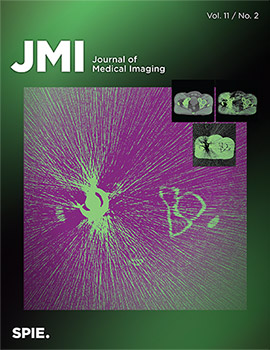The Journal of Medical Imaging (JMI) allows for the peer-reviewed communication and archiving of fundamental and translational research, as well as applications, focused on medical imaging, a field that continues to benefit from technological improvements and yield biomedical advancements in the early detection, diagnostics, and therapy of disease as well as in the understanding of normal conditions.
On the cover: "Dual-energy computed tomography imaging with megavoltage and kilovoltage X-ray spectra" by Giavanna Jadick, Geneva Schlafly, and Patrick J. La Rivière, in Volume 11 Issue 2.


